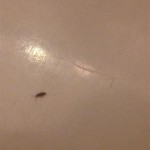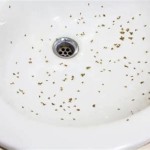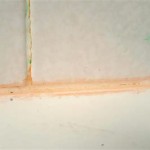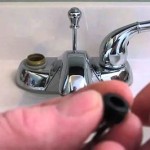Why Does My Bathroom Sink Smell Like a Sewer?
A persistent sewer-like odor emanating from a bathroom sink can be a frustrating and unpleasant experience. The smell often indicates an underlying problem within the plumbing system, ranging from relatively minor issues to more complex blockages or structural deficiencies. Identifying the cause of the odor is crucial to implementing the appropriate corrective measures and restoring a sanitary and odor-free bathroom environment.
Several factors can contribute to sewer gas infiltrating the bathroom through the sink drain. Understanding the potential culprits and their related symptoms is the first step towards effectively diagnosing and resolving the issue. This article will explore the common reasons behind this unwelcome bathroom odor, providing insights into the mechanisms at play and offering potential solutions to eliminate the smell.
The Dried-Out P-Trap
The P-trap, a U-shaped section of pipe located beneath the sink, is designed to hold a small amount of water. This water acts as a barrier, preventing sewer gases from rising up through the drain and into the bathroom. Sewer gas consists of various gases produced by the decomposition of organic matter in the sewage system, including methane, hydrogen sulfide, and ammonia, all contributing to the foul odor.
If the P-trap dries out, this protective barrier is lost, allowing sewer gases to flow freely into the room. This is a common occurrence in infrequently used sinks, such as those in guest bathrooms or rarely occupied spaces. Over time, the water in the P-trap can evaporate, especially in warmer climates or during periods of low humidity.
Aside from lack of use, a leaky P-trap can also lead to the depletion of water within the trap. A small crack, loose fitting, or corroded pipe can allow water to slowly seep out, eventually leaving the trap empty. Similarly, a plumbing vent issue might siphon water from the trap. Identifying and addressing the cause of the water loss is vital to preventing the recurrence of the sewer smell.
To determine if a dried-out P-trap is the cause, simply run the water in the affected sink for a few minutes. This will refill the trap and re-establish the water barrier. If the sewer smell disappears after running the water, it is highly likely that the dried-out P-trap was the culprit. Regularly using the sink or periodically adding water to the drain can help prevent this issue in the future.
Problems with the Plumbing Vent System
The plumbing vent system is a network of pipes that allows air to enter the drain lines, preventing a vacuum from forming when water drains. This vacuum, if allowed to develop, can siphon water from the P-traps of various fixtures throughout the house, including bathroom sinks, toilets, and showers. A properly functioning vent system ensures that wastewater flows smoothly and that the P-traps remain filled with water, maintaining the sewer gas barrier.
A blockage in the vent system, caused by debris, leaves, bird nests, or even frozen condensation in colder climates, can disrupt the airflow. This can lead to negative pressure in the drain lines, siphoning water from the P-traps and allowing sewer gases to escape. The location of the vent pipe, typically extending above the roof, makes it susceptible to external obstructions.
Signs of a plumbing vent problem can include slow-draining sinks, gurgling sounds coming from the drains, and the simultaneous occurrence of sewer smells in multiple bathrooms or fixtures. A more subtle indication is the toilet water level fluctuating without any apparent use. These symptoms often point to a broader issue affecting the entire plumbing system rather than just a single fixture.
Diagnosing a vent blockage can be challenging and often requires professional assistance. A plumber can use specialized tools, such as a plumbing snake or camera, to inspect the vent pipes for obstructions. Clearing the blockage will restore proper airflow and prevent the siphoning of water from the P-traps, thereby eliminating the sewer smell. In some cases, the vent system may be inadequately sized or improperly installed, requiring modifications to ensure proper ventilation.
Biofilm and Bacterial Growth in the Drain
While the P-trap and vent system are the most common causes of sewer odors, the accumulation of organic matter and bacterial growth within the drainpipe itself can also contribute to the problem. Over time, soap scum, hair, food particles (especially in kitchen sinks), and other debris can cling to the inner walls of the drainpipe, creating a breeding ground for bacteria.
These bacteria decompose the organic material, producing foul-smelling gases, including hydrogen sulfide. The biofilm, a slimy layer of microorganisms and their byproducts, can further trap debris and amplify the odor. This issue is often more pronounced in drains that are infrequently cleaned or where the flow of water is restricted.
The smell associated with biofilm and bacterial growth is often described as musty, rotten, or sulfurous. It may be intermittent, becoming more noticeable after the sink has been used or when the water is running. Unlike a dried-out P-trap, simply running water may not completely eliminate the odor, as the bacteria and biofilm are actively producing the gases.
Addressing biofilm and bacterial growth requires a thorough cleaning of the drainpipe. Several methods can be employed, including using enzymatic drain cleaners, baking soda and vinegar mixtures, or even disassembling the drainpipe to physically scrub away the buildup. Enzymatic cleaners are designed to break down organic matter, while baking soda and vinegar create a fizzing action that can help dislodge debris. Regularly flushing the drain with hot water and using drain screens to prevent hair and other debris from entering the pipe can help prevent future buildup.
In some cases, the drainpipe may be severely corroded or damaged, providing even more surface area for biofilm to adhere to. If cleaning efforts are unsuccessful, replacing the drainpipe may be necessary to completely eliminate the odor. A plumber can assess the condition of the drainpipe and recommend the appropriate course of action.
Addressing a sewer smell emanating from a bathroom sink often involves a process of elimination. Beginning with the simplest solutions, such as refilling the P-trap, and progressing to more complex investigations, such as vent system inspection, is a logical approach. Understanding the underlying mechanisms that contribute to the odor allows for targeted interventions and effective resolution of the issue.
Prevention is also crucial. Regularly using the sink, cleaning the drain, and maintaining the plumbing system can significantly reduce the likelihood of sewer odors developing. Addressing minor plumbing issues promptly can prevent them from escalating into more significant problems that contribute to foul smells.
When dealing with plumbing issues, especially those involving sewer gases, safety should always be a primary concern. Sewer gases can be harmful if inhaled in high concentrations, and some gases, like methane, are flammable. If the sewer smell is strong or persistent, it is advisable to ventilate the area and seek professional assistance from a qualified plumber. Ignoring the problem can lead to further damage to the plumbing system and potential health risks.
In conclusion, a sewer smell from a bathroom sink is a strong indication of an underlying problem within the plumbing system. By carefully considering the potential causes, such as dried-out P-traps, vent system blockages, and bacterial growth, and implementing the appropriate corrective measures, the source of the odor can be identified and eliminated, restoring a clean and healthy bathroom environment.

How To Clean A Stinky Sink Drain Home Repair Tutor

What Causes Bathroom Drains To Smell

Why Does Bathroom Smell Like Sewage Crystal Blue

Sewer Smell In Bathroom Solved Bob Vila

How To Get Rid Of The Sewer Smell From A Bathroom Terry S Plumbing

Why Does My Bathroom Sink Smell Like Sewer Top Causes

Bathroom Smells Like Sewage Causes Fixes Inside Out

How Can I Help A Stinky Bathroom Sink Drain Cleaning More

Why Does My Kitchen Sink Smell Like Sewer Quora

Why Does My Bathroom Smell Like Sewage 9 Tips For A Happy Home Phyxter Services
Related Posts







